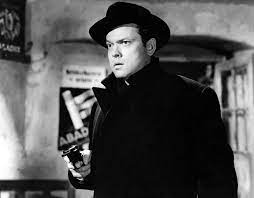The world’s oldest working Ferris wheel, the internationally famous symbol of Vienna, has just marked its 125th anniversary with much celebration and a music and drama festival.
As a city’s image, it shares the delightful shiver given by the Eiffel Tower in Paris or Tower Bridge in London: immediate recognition. The “Weiner Riesenrad” could only be one place — even though the Great Wheel has several larger imitators elsewhere. Its power of association is unique.
This durability, this brand if you like, has much to do with the classic Orson Welles/Joseph Cotten tale set in late 1940s Vienna, then divided by the Four Powers at the start of the Cold War.
“The Third Man” is revered by movie lovers as a masterpiece for its direction, acting, script, photography and music. This black and white, Anglo-American lexicon of filmmaking excellence is, above all, atmospheric.
It was produced by Hollywood giant David O. Selznick, famous for “Gone with the Wind,” and the up-and-coming British director Carol Reed, later to be knighted for services to the film industry.
Although it won an Oscar for the cameraman, that was all. The film’s reputation, and the esteem it is now held, has accumulated over the years. However, pivotal from the start of the complicated production was a starring role for Orson Welles.
The legendary creator of “Citizen Kane” was notably off-hand in fulfilling his contractual obligations. He preferred the fleshpots of Paris and Rome to the limited prospects of bombed-out, half-starving Vienna; there was anxiety the maestro might not turn up. Emissaries were sent to plead with a star becoming a byword in self-indulgence.
“Ask not what you can do for your country. Ask what’s for lunch,” Welles once said. So it’s ironic, as cineastes claim, that his belated appearance in the story remains “the greatest movie entrance ever.” The shoes, the cat, and then — out of the darkness — Welles’ enigmatic features flash briefly before he escapes into shadow again to vanish in a deserted square. These images still haunt us, and one can speculate how Welles would have enjoyed the randomness of movie posterity to which he made such a huge contribution.
Recall also the climactic chase through the sewers. Some of the sequences had to be recreated and shot in British studios because Welles was too fastidious about spending much time in the city’s vaulted bowels. He claimed he’d catch pneumonia if he did, but, in truth, the location was a challenge to the great man’s vanity.
Later he was happy to take playful credit for the “cuckoo clock” dialogue, which, of course, happens on the now iconic Ferris wheel. Movie lovers revere that, too, and can quote from Welles’ speech. “Would you really feel any pity if one of those dots stopped moving forever?”
This brings us to the doors of one of Vienna’s oldest cinemas, an arthouse diagonally opposite the essential Opera House in the city center. The Burg Kino is idiosyncratic for the luxury of its plush red seats and balconies in its several auditoriums, which show only foreign films, especially American, and always (with subtitles) in original versions.
Its prize exhibit, some might say relic, is “The Third Man.” The movie has been showing two or three times a week for decades — certainly a record — and these days is touted as a tourist attraction, a must-see screening for first-time visitors or younger generations for whom “the war” refers to Vietnam, not Germany.
Thus the Great Wheel turns into a metaphor.

